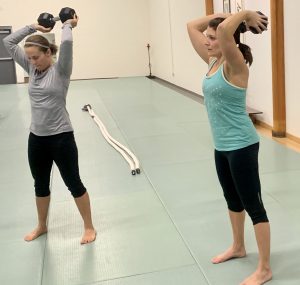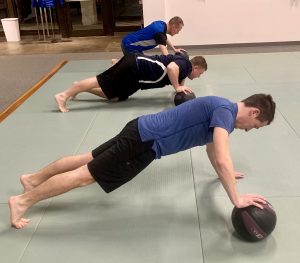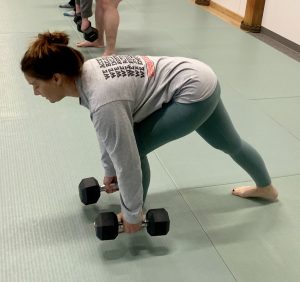 Even the best program has its limits and can’t deliver results indefinitely because the body adapts to it.
Even the best program has its limits and can’t deliver results indefinitely because the body adapts to it.
If the work, whether that’s the number of repetitions performed, weight lifted, or any number of other things, if that doesn’t change, then your body won’t continue to get stronger, lose fat, or put on lean muscle.
This is not to say that you have to turn every movement into strength versions of the Funky Chicken with a lot of elaborate choreography in order to “confuse” your muscles, nor do you have to keep pursuing more (more weight, reps, etc.) when you feel like you’ve pushed yourself as far as you can go on any one thing.
This is more about strategically mixing up the work and having a simple plan to do so.
By the way, if you’ve not yet worked out at 513FIT, email me (Charlie) at 513fit@gmail.com about trying a week for free.
One of the cornerstones of 513FIT classes is strength work. There are other things we do like core, ground work, mobility, and conditioning, and those can be adjusted up or down as well, but those aren’t my primary focus of this post.
Let’s say that you’ve been attending classes for a while and you’re starting to hit a plateau. You can do the same number of push-ups, do the same number of kettlebell swings with the same weight, and while you’d like to improve, you’re doing as much weight as you can handle safely and don’t want to get injured.
 Instead of settling into routine or banging your head against a wall, make it a point to strategically mix up the work. This will mean intentionally choosing weights that are lighter than you normally use and getting in more reps.
Instead of settling into routine or banging your head against a wall, make it a point to strategically mix up the work. This will mean intentionally choosing weights that are lighter than you normally use and getting in more reps.
Or this will mean picking bigger weights or more challenging variations, doing fewer reps, and not working for the entire interval. The exercise police won’t pull you over for stopping before the timer goes off.
To keep it simple, if you do that, I’d recommend working a particular rep range for up to 8 weeks and then changing gears.
And, while this all looks super cool and fancy, there is still this thing called life which has a way of throwing curve balls at us. Adjust accordingly. In some cases it’s better to show up, move a bit, and call it a workout rather than push through with a hard effort when you’re feeling tired or run down.
To reiterate, we’re talking about the strength aspect of the workout. These fall into four main movement patterns that train the entire body, along with a few that are more targeted.
The Big Four
- Hip Hinge: Deadlift, Good Morning, KB Swing, Side Lunge, Single Leg RDL
- Push: Push-ups, Judo Push-ups, Dips, One or two arm overhead presses
- Pull: Inverted Row, 1 or 2 DB row, Drag Curls, Curl & Ext. rotation
- Knee Dominant: Squat, Lunge
These are the main movements that I’m referring to in changing up the work.
To make a movement harder, here are a few basic rules to follow:
- Increase the weight
- Decrease assistance (IE don’t use your legs to help on the way down with dips)
- Increase the range of motion (IE step off the edge or the mat for reverse lunges
- One limb instead of two (IE archer push-ups, lunges, split squats, 1L RDL’s)
To sum up, there’s no good reason to stay stuck in a plateau. You don’t have to get bored, nor do you have to try to run through a brick wall. Just mix up the workload and keep things fresh.
If you’d like to try a week of classes for free, email me at 513fit@gmail.com and you can get started.

